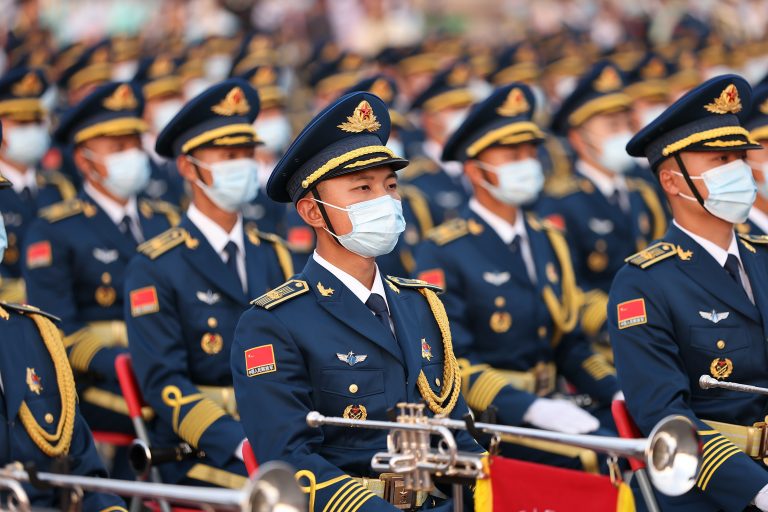The Chinese regime recently carried out a live-fire bombing in the contentious waters of the South China Sea. According to Chinese state-backed media outlet Global Times, the H-6J bomber took part in the live-fire exercise by dropping bombs on islands located in the South China Sea as well as laying mines. The drill demonstrated the H-6J’s bombing capabilities even though it can use land-attack and anti-ship cruise missiles.
The military exercise was organized by a regiment based in South China’s Hainan Province that comes under the PLA Southern Theater Command. The media outlet cited analysts claiming that the drills would serve as a “deterrent” amidst provocations from Taiwanese independence activists and foreign forces.
Multiple bombers took off during the night, arriving at the target area of the drill by daybreak, while bracing for complex weather conditions like heavy clouds. The bombs hit islands and reefs in the region, causing large explosions. The bombers soon came back to the base, were resupplied, checked, and fueled. They then engaged in a second wave of bombing.
“We have effectively tested the accuracy and reliability of both types of munitions. For the next step, we will pursue innovations in tactics and approaches with the realistic situation of the enemies taken into consideration, and make breakthroughs in using new types of weapons and equipment,” Zhang Yanjie, a deputy commander of the regiment, told CCTV.
However, some experts question whether the drills actually did demonstrate the combat capability of H-6J.
Success
You are now signed up for our newsletter
Success
Check your email to complete sign up
Being a non-stealthy, large bomber, a H-6J might only be impactful in large wars and limited scenarios. For the H-6J to carry out bombing or mine-laying missions under such situations, the PLA Air Force first needs to establish air superiority, which is something that cannot be guaranteed in any conflict.
South Korea, Japan, and Taiwan have advanced air defense systems in the region to counter Beijing’s attempts to set up air dominance. This would make the role of H-6J very limited.
“A bomber such as the H-6J would be extremely vulnerable to ship-launched U.S. Navy fifth-generation aircraft and would be easily seen by drones and networked ground surveillance systems. An aircraft as large as the H-6J could also be vulnerable to anti-aircraft fire coming from surface ships, depending upon how low it was flying to lay mines in littoral areas,” Kris Osborn, Defense Editor for The National Interest, wrote in an article.
H-6J can carry a maximum of seven YJ-12 supersonic anti-ship cruise missiles and has a combat radius of 2,200 miles. It is said to be able to accurately attack moving maritime targets and can conduct all-weather combat missions.
Despite these capabilities, the H-6J is “actually not that advanced” when compared to U.S. bombers, said Qi Leyi, a Taipei-based military analyst and commentator, in an interview with RFA. It does have the advantage of being able to lay mines from the air “very fast,” which could be something difficult to deal with.
Leyi also pointed out that Beijing laying down mines to blockade Taiwan is “one of the main ways” for the PLA to invade the island.
Last month, the Taiwanese Ministry of National Defense had published a report detailing its plans to counter China’s “gray zone threats.” It accused Beijing of warplane incursions and ramming its coast guard vessels using speedboats. Beijing is also using “cognitive warfare” to influence public opinion in Taiwan.
“Its intimidating behavior does not only consume our combat power and shake our faith and morale, but also attempts to alter or challenge the status quo in the Taiwan Strait to ultimately achieve its goal of ‘seizing Taiwan without a fight,’” the report said.














